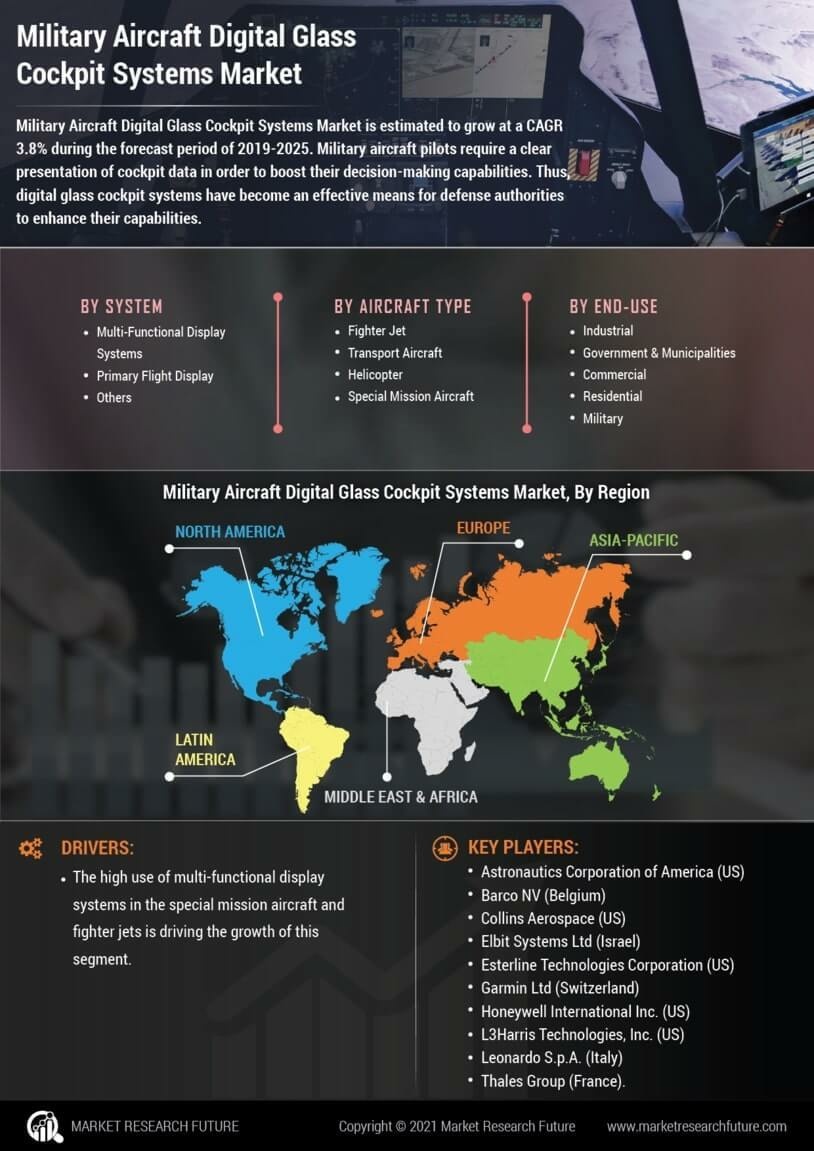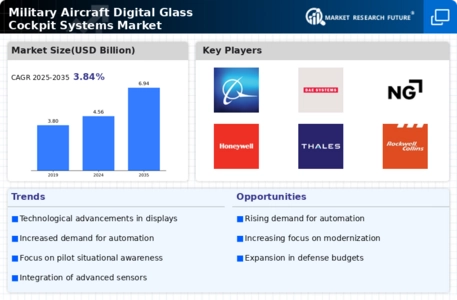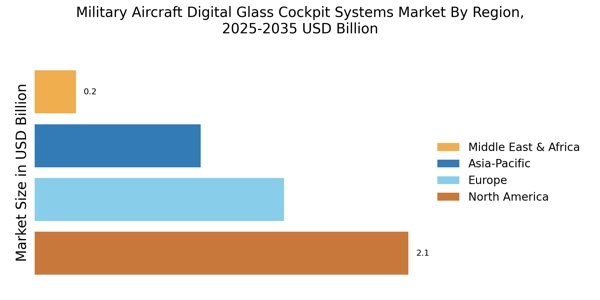Increased Defense Budgets
The Military Aircraft Digital Glass Cockpit Systems Market is likely to benefit from increased defense budgets across various nations. Governments are prioritizing modernization of their military fleets, which includes upgrading cockpit systems to enhance operational capabilities. In recent years, several countries have allocated substantial funds towards defense spending, with an estimated increase of 3.5% in military budgets globally. This financial commitment suggests a robust demand for advanced cockpit technologies, as nations seek to maintain competitive advantages in aerial warfare. Consequently, the market for digital glass cockpit systems is expected to expand, as military forces invest in cutting-edge technologies to ensure mission success.
Interoperability with Allied Forces
The Military Aircraft Digital Glass Cockpit Systems Market is shaped by the necessity for interoperability among allied forces. As military operations often involve coalition forces, the ability to share information seamlessly is critical. Digital glass cockpit systems are being designed to meet interoperability standards, allowing for effective communication and data exchange during joint missions. This trend is underscored by recent initiatives aimed at standardizing cockpit technologies across allied nations, which could potentially streamline operations and enhance mission effectiveness. The growing focus on interoperability suggests a sustained demand for advanced cockpit systems that can adapt to various operational environments.
Focus on Pilot Training and Simulation
The Military Aircraft Digital Glass Cockpit Systems Market is influenced by a growing emphasis on pilot training and simulation technologies. As military operations become increasingly complex, the need for effective training solutions has become paramount. Digital glass cockpit systems are being integrated into simulators to provide realistic training environments for pilots. This trend is supported by the fact that training budgets have seen an increase of approximately 4% in recent years, reflecting the importance of preparing pilots for real-world scenarios. Enhanced training capabilities not only improve pilot proficiency but also reduce operational risks, thereby driving demand for advanced cockpit systems.
Technological Advancements in Cockpit Systems
The Military Aircraft Digital Glass Cockpit Systems Market is experiencing a surge in technological advancements, particularly in the integration of advanced avionics and digital displays. These innovations enhance situational awareness and operational efficiency for pilots. The introduction of augmented reality and artificial intelligence in cockpit systems is transforming traditional flight operations. As of 2025, the market is projected to grow at a compound annual growth rate of approximately 5.2%, driven by the demand for more sophisticated and user-friendly interfaces. This trend indicates a shift towards more intuitive systems that can process vast amounts of data in real-time, thereby improving decision-making capabilities during missions.
Rising Demand for Enhanced Situational Awareness
The Military Aircraft Digital Glass Cockpit Systems Market is driven by the rising demand for enhanced situational awareness among military pilots. Modern warfare requires pilots to process and analyze vast amounts of information quickly. Digital glass cockpit systems provide advanced data visualization tools that improve situational awareness, allowing pilots to make informed decisions in real-time. As military operations evolve, the need for systems that can integrate multiple data sources, such as radar and sensor inputs, becomes increasingly critical. This demand is reflected in market forecasts, which indicate a potential growth rate of 6% in the coming years, as military forces seek to enhance their operational capabilities through advanced cockpit technologies.


















Leave a Comment